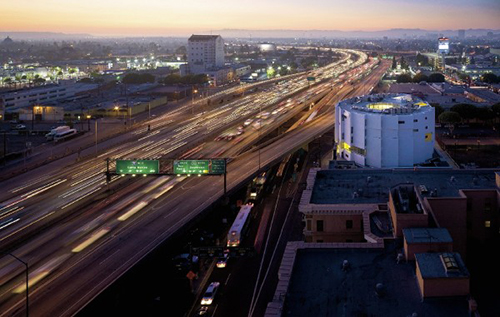Harvard Magazine: Good Design
By Stephanie Garlock, Harvard Magazine
IN JUNE 1968, the American Institute of Architects (AIA) invited civil-rights leader Whitney Young Jr. to speak at its national convention. Just two months earlier, riots had devastated dozens of American downtowns in the wake of Martin Luther King Jr.’s assassination. AIA members wanted to know what had happened, and how they could help. But Young, then the president of the National Urban League, offered far more condemnation than comfort. “You are not a profession that has distinguished itself by your social and civic contributions to the cause of civil rights, and I’m sure this has not come to you as any shock,” he observed. “You are most distinguished by your thunderous silence and your complete irrelevance.”
Two and a half decades later, another upheaval—the 1992 Rodney King riots in Los Angeles—jolted architect Michael Maltzan, M.Arch. ’88, into action. After earning his degree from the Harvard Graduate School of Design (GSD), he had moved to that city to work for Frank Gehry, drawn to the intense urbanism of the sprawling metropolis. When the riots broke out, he reflects, it was difficult to see L.A. become a place “that, all of a sudden, you had to understand in a very different way—a much more complex way, a much more real way.” Maltzan had helped build the city that was being torn apart, and he wouldn’t settle for complete irrelevance.
Soon, he won his first solo commission: to build a campus for Inner-City Arts, a nonprofit arts-education organization based in the downtown Skid Row neighborhood. It was a perfect launching pad for his new practice, Michael Maltzan Architecture (MMA), offering the rare opportunity for an early-career architect to design an institutional building. Even more appealing, he adds, were the “fundamental questions” about social, political, and community issues that the project forced him to answer.
Twenty years later, MMA’s buildings dot the Los Angeles landscape. In the neighborhoods surrounding Inner-City Arts, he’s worked with the Skid Row Housing Trust, a nonprofit community-development corporation (CDC), to construct three apartment buildings that offer permanent housing to formerly homeless residents. The New Carver Apartments, the second of the three, rises next to the Santa Monica Freeway like a cylindrical drum, the unique shape designed to insulate residents from the noise of passing cars. But, as a review in Architect Magazine put it, the project makes a bigger statement as well: that “affordable housing is not a blight that needs to be hidden away.”
Read the entire article on Harvard Magazine.

